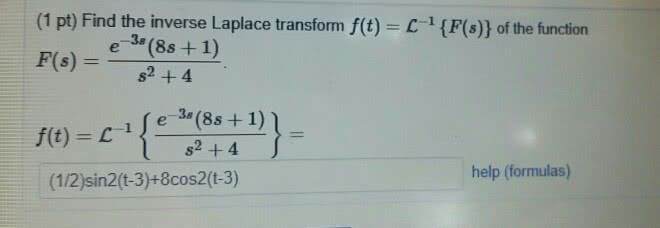MATH 2065 Chapter : Table ParFrac IntFor
Document Summary
F (s) = l {f (t)} (s) 1 tn eat tneat cos bt sin bt eat cos bt eat sin bt . 1 s a n! (s a)n+1 s s2 + b2 b s2 + b2 s a (s a)2 + b2 b (s a)2 + b2. L {af (t) + bg(t)} = al {f } + bl {g} L {f (t)} (s) = sl {f (t)} f (0) L {eatf (t)} = f (s a) L {f (t)} (s) = s2l {f (t)} sf (0) f (0) L {(f g)(t)} (s) = f (s)g(s). The following two theorems are the main partial fractions expansion theorems, as pre- Partial fraction expansion theorems sented in the text. Suppose a proper rational function can be written in the form p0(s) (s )nq(s) and q( ) 6= 0. Then there is a unique number a1 and a unique polynomial p1(s) such that p0(s) (s )nq(s) A1 (s )n + p1(s) (s )n 1q(s)



